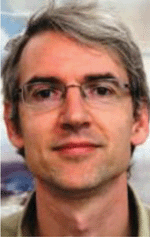Changes in multi-phase flow properties of carbonate porous media during CO2 injection
Mojtaba Seyyedi A B , Ausama Giwelli A , Cameron White A , Lionel Esteban A , Michael Verrall A and Ben Clennell AA CSIRO, 26 Dick Perry Avenue, Kensington, WA 6151, Australia.
B Corresponding author. Email: mojtaba.seyyedi@csiro.au
The APPEA Journal 60(2) 672-676 https://doi.org/10.1071/AJ19061
Accepted: 10 March 2020 Published: 15 May 2020
Abstract
Impacts of fluid–rock geochemical reactions occurring during CO2 injection into underground formations, including CO2 geosequestration, on porosity and single-phase permeability are well documented. However, their impacts on pore structure and multi-phase flow behaviour of porous media and, therefore, on CO2 injectivity and residual trapping potential, are yet unknown. We found that CO2-saturated brine–rock interactions in a carbonate rock led to a decrease in the sweep efficiency of the non-wetting phase (gas) during primary drainage. Furthermore, they led to an increase in the relative permeability of the non-wetting phase, a decrease in the relative permeability of the wetting phase (brine) and a reduction in the residual trapping potential of the non-wetting phase. The impacts of reactions on pore structure shifted the relative permeability cross-point towards more water-wet condition. Finally, calcite dissolution caused a reduction in capillary pressure of the used carbonate rock. For CO2 underground injection applications, such changes in relative permeabilities, residual trapping potential of the non-wetting phase (CO2) and capillary pressure would reduce the CO2 storage capacity and increase the risk of CO2 leakage.
Keywords: capillary pressure, CCS, CO2 storage, fluid–rock reactions, pore size, pore structure, relative permeability, residual trapping.

Mojtaba Seyyedi is a research scientist working at CSIRO. He obtained his PhD in reservoir engineering from Heriot-Watt University, UK. Mojtaba has expertise in CO2 underground storage, CCUS, EOR and EGR scenarios, multi-phase flow in porous media, complex fluid–rock and fluid–fluid interactions in porous media, and compositional reservoir simulations. He has 9 years of international work experience in the Middle East, UK, Denmark, Canada, and Australia. |

Ausama Giwelli is a Senior Research Scientist at CSIRO in Australia. He is a member of the Rock Properties Team, Energy BU. Ausama is petroleum engineer by background with a doctorate in Earth Science from Tohoku University, Japan. His research interests lie in experimental geomechanics and geophysics, carbon capture, utilisation and storage and unconventional resources. He has been involved in several research projects, e.g. fault reactivation, induced seismicity, rock–fluid interaction and fibre-optic design and implementation during reservoir rock testing. He is a member of ISRM, EAGE, and The Society of Core Analysts. |

Cameron White is a research technician at CSIRO. Cameron has an MSc degree in Chemical Engineering from Curtin University. |

Lionel Esteban holds a PhD in applied geophysics, magnetic environment and petrophysics from joint French Universities (University Paul Sabatier-Toulouse and University of Strasbourg, EOST and Institut de Physique du Globe, IPG) and the French Nuclear Waste Management (ANDRA). Lionel Esteban is currently principal petrophysicist at CSIRO (Perth, WA), a member of SPWLA and SPE, and academic editor in Geofluids Journal. He develops and tests petrophysical experimental laboratory approaches and integrates them to logs analysis to characterise and understand the physical properties responses of unconventional and conventional reservoirs at different scales, using a wide spectrum of petrophysical tools, including: X-ray imaging, electrical, nuclear magnetic resonance, mechanical, and core flooding under (or not) HP/HT. His current research focuses on low permeability reservoirs to understand clay mineral relationships, hydrocarbon storage and sealing capacity, CO2–rock interactions and core flooding in carbonates, drilling mud effects on rock properties in conventional reservoirs. |

Michael Verrall currently manages the Electron Beam and X-ray Laboratories at the Australia Research Resource Centre (ARRC) for CSIRO Mineral Resources Characterisation program. The laboratories provide researchers with access to state-of-the-art equipment for characterisation of materials of interest to the minerals a resource sector and relighted industries. As a physicist with an interest in instrumentation automation and experimental design, Michael provides guidance for scientist to help develop experiments and characterise their samples in a way that can be communicated effectively to industry through projects or the scientific community through publications and presentations. |

Dr Michael (Ben) Clennell is a Senior Principal Research Scientist in the area of rock physical properties. He has a PhD in Geology from Royal Holloway University of London. His research spans petrophysics, geomechanics, structural geology and marine and petroleum geology, applied to onshore and offshore oil and gas, subsurface storage of carbon dioxide and the understanding of geohazards, including earthquakes, submarine landslides and gas hydrates. He has held a range of science and research management roles at CSIRO, initially developing laboratory systems for rock properties measurement, and later leading major projects in fault rock sealing and leakage, carbonate reservoir geomechanics and multiphysics, and coal petrophysics, among others. He has contributed his expertise in rock properties to numerous other projects in conventional and unconventional oil and gas, and for geological CO2 storage. He has led small and large teams and research groups directed to onshore and offshore petroleum geoscience research, and contributes to strategy development for industry focused RandD in exploration, appraisal and development of oil and gas. |
References
Elkhoury, J. E., Ameli, P., and Detwiler, R. L. (2013). Dissolution and deformation in fractured carbonates caused by flow of CO2-rich brine under reservoir conditions. International Journal of Greenhouse Gas Control 16, S203–S215.| Dissolution and deformation in fractured carbonates caused by flow of CO2-rich brine under reservoir conditions.Crossref | GoogleScholarGoogle Scholar |
Hao, Y., Smith, M., Sholokhova, Y., and Carroll, S. (2013). CO2-induced dissolution of low permeability carbonates. Part II: numerical modeling of experiments. Advances in Water Resources 62, 388–408.
| CO2-induced dissolution of low permeability carbonates. Part II: numerical modeling of experiments.Crossref | GoogleScholarGoogle Scholar |
Lamy-Chappuis, B., Angus, D., Fisher, Q., Grattoni, C., and Yardley, B. W. D. (2014). Rapid porosity and permeability changes of calcareous sandstone due to CO2-enriched brine injection. Geophysical Research Letters 41, 399–406.
| Rapid porosity and permeability changes of calcareous sandstone due to CO2-enriched brine injection.Crossref | GoogleScholarGoogle Scholar |
Luhmann, A. J., Kong, X. Z., Tutolo, B. M., Garapati, N., Bagley, B. C., Saar, M. O., and Seyfried, W. E. (2014). Experimental dissolution of dolomite by CO2-charged brine at 100°C and 150bar: evolution of porosity, permeability, and reactive surface area. Chemical Geology 380, 145–160.
| Experimental dissolution of dolomite by CO2-charged brine at 100°C and 150bar: evolution of porosity, permeability, and reactive surface area.Crossref | GoogleScholarGoogle Scholar |


